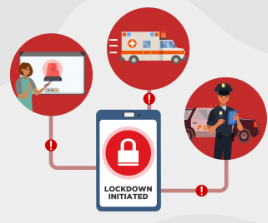Online learning can offer a flexible and accessible pathway to education, especially for students with disabilities. Whether you’re starting a new program or continuing your studies, the right strategies and tools can help you succeed in an online learning environment. Here’s how to make the most of your experience.
1. Know Your Rights and Available Support
Before starting classes, research what accommodations are available through your school’s disability services. Most institutions offer support such as extended test time, note-taking assistance, screen reader–compatible materials, captioned videos, and live transcription for lectures. Don’t hesitate to reach out to the support office early—they can work with instructors to ensure your needs are met.
2. Choose Accessible Platforms and Courses
Not all online learning platforms are created equal. Look for programs that follow accessibility standards such as keyboard navigation, text-to-speech compatibility, clear and readable fonts, flexible layout design, and video content with captions. Many major platforms now provide accessibility statements or resources—these can help you decide which programs best support your learning style.
3. Communicate with Instructors
If you encounter challenges in class, open communication with instructors can make a big difference. You can let them know about specific accommodations, request materials in alternative formats (e.g., PDF instead of slides), or ask for additional time or assistance with certain assignments. Instructors are generally willing to help when they understand your needs.
4. Use Assistive Technology
Technology can remove many barriers to learning. Depending on your needs, consider using screen readers like NVDA or JAWS, voice recognition software such as Dragon NaturallySpeaking, speech-to-text tools like Otter.ai or Google Docs voice typing, Zoom features such as live captions and keyboard shortcuts, or browser extensions that improve readability or contrast. Many of these tools are free or discounted for students.
5. Create a Comfortable Study Environment
Design a space that supports your physical and cognitive comfort. Use ergonomic chairs or desks, minimize distractions with noise-canceling headphones, break tasks into smaller parts to reduce fatigue, and set timers for breaks to avoid overexertion. Your environment can be just as important as your technology.
6. Manage Your Schedule with Flexibility
One of the biggest benefits of online classes is flexibility. Customize your study routine based on your energy levels and needs. Study during your most productive hours, use calendar apps to plan manageable goals, and ask if you can attend class asynchronously if needed. Building in rest and self-care is essential for long-term success.
7. Connect with Peers and Support Groups
Isolation can be a challenge in online learning. Consider joining online study groups or discussion forums, disability advocacy organizations, or peer mentoring programs. Connecting with others who understand your experience can provide both academic and emotional support.
Final Thoughts
Online classes can be a rewarding and accessible learning option for students with disabilities—when the right tools, accommodations, and support are in place. By advocating for your needs and using available resources, you can thrive in a virtual classroom and reach your educational goals.





